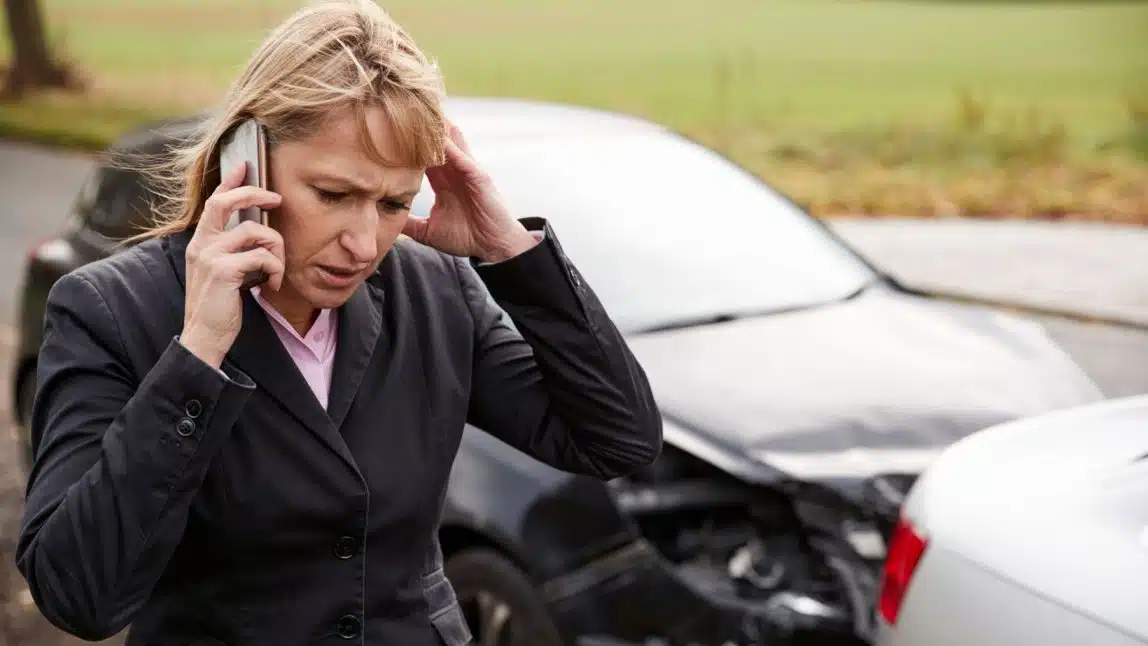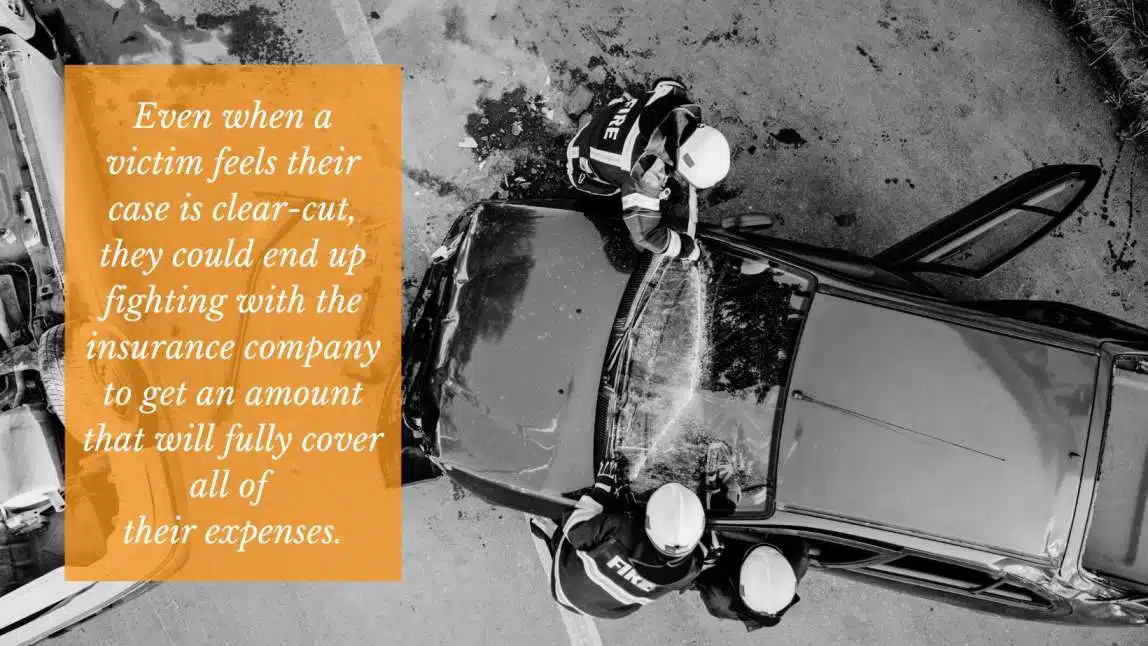Do I Need a Lawyer for a Car Accident That Was Not My Fault?

You’ve been hurt in an accident, and you are sure you know how the entire incident played out. From your perspective, the other driver was clearly responsible for the crash. Because you are so certain of the facts of the case and have witnesses that agree, you might feel you don’t need to hire an attorney.
Unfortunately, even if it’s true, a victim can’t simply state “It’s not my fault” and expect to receive full compensation for their injuries. An at-fault driver’s insurance company will demand proof, and that burden is on the person seeking damages. This can be extremely difficult to do without legal assistance, especially while trying to recover from serious injuries.
Finding Who Is At Fault For a Car Accident
Some states are “no-fault” states, meaning that no matter who was responsible, each person’s own insurance will compensate them for property damage and medical bills resulting from a crash. Missouri and Illinois, however, are “tort” or “fault” states. This means that the at-fault driver’s insurance company will pay a victim’s expenses, but only if the company agrees that the following three things are true:
- The at-fault driver’s negligence or carelessness caused the car accident.
- The car accident was the cause of the victim’s injuries.
- The injuries resulted in losses that justify compensation.
Insurance companies are understandably focused on their own bottom line, so they will always pay out as little as possible if they can. One way of doing this is to deny a claim completely, insisting their client was not to blame for the accident. They may even try to say that the victim was responsible. Or they might attempt to minimize the seriousness of the person’s injuries.
Even when a victim feels their case is clear-cut, they could end up fighting with the insurance company to get an amount that will fully cover all of their expenses. Filing a lawsuit against the at-fault driver may become necessary in order to get a fair settlement that pays for all of the medical care necessary for a full recovery. Reaching a successful outcome with the insurance company or in court is much more likely with the representation of a qualified personal injury attorney.
In fact, statistics compiled by the legal publishing company Nolo showed that personal injury victims received payouts 91% of the time, while those without representation only collected 51% of the time. And the average amount of compensation received by unrepresented plaintiffs was only about a quarter of those with a lawyer. Even after paying an attorney’s fees, represented victims end up with higher payouts.

How Fault Affects Compensation
A car accident claim may settle quickly and for an appropriate amount if it involves “no-doubt liability.” These are crashes that are undeniably one person’s fault. Some examples of clear liability:
- a driver who is under the influence
- a rear-end collision (provided the first car has working brake lights)
- pulling out or turning left in front of an oncoming car
Most car accidents, however, have at least a little room for doubt. Insurance companies and attorneys for the defendant in a personal injury case will attempt to deflect blame. If they can not deny payment completely, they may try to reduce the amount of compensation.
One tactic is to blame the crash on an “Act of God” such as fog or icy roads. While someone might still be negligent in how they drive during bad conditions, it could potentially reduce their liability.
Another strategy is to insist that the victim shares responsibility for what happened. If either of these strategies works, the victim could receive only a portion of the amount they are seeking. The exact percentage depends on the state.
Missouri is a pure comparative negligence state. This means that each party in a car accident is liable for the percentage of the accident that was their fault. So if the victim shoulders 20% of the blame, they will only receive 80% of any financial settlement, rather than the 100% they would get if it was entirely the other driver’s fault.
Illinois is slightly different. Under its modified comparative negligence laws, whichever driver is more responsible pays 100%, as long as they are more than 51% responsible. So in the above example, the person who was 20% responsible would receive 100% of the settlement, rather than only 80%.
A defendant can claim that the victim shares blame because they failed to prevent the accident in some way, and that their injuries resulted from their own carelessness. For example, if the victim is rear-ended while parked on the shoulder but the car’s hazard lights are not on, there could be an argument that they are partly responsible.
Sharing fault for a car accident can prevent someone from getting full compensation for their injuries. An attorney can be instrumental in making sure that a victim is not unjustly blamed for something that was not their fault.
How Do I Prove a Car Accident is Not My Fault?
Proving fault for a car accident starts at the scene of the crash. First-hand accounts of what happened should be obtained from everyone involved in the crash, as well as anyone who witnessed what happened.
Photos and videos that show conditions and damage in the aftermath are important. And surveillance or doorbell camera videos from nearby businesses or homes might show the crash in real-time.
Documentation can also help make a case. This can include police reports and any tickets that were issued, as well as reports from first responders that detail victims’ condition and treatment. If the accident involved a commercial vehicle, the truck might have special equipment like a dashcam or data recorder. These “black boxes” often contain valuable information like the speed the truck was traveling at the time of the collision.
As victims receive treatment in the days and weeks after a car accident, the next phase of gathering evidence begins. Doctors’ notes and all medical bills will serve as proof of the extent of the victim’s injuries and their cost.
Gathering all of this information can be quite complicated, especially for an individual who has just been through a traumatic accident. They may be hospitalized, disoriented, or otherwise incapable of doing the necessary legwork on their own.
When an attorney takes on a personal injury case, collecting evidence becomes part of their job. They know exactly what type of information to seek out to prove who was at fault and to justify the amount of money they request. Read this informative article on how to prove you are not at fault in a car accident.
Hiring a Lawyer For a Better Outcome
Even when another driver was clearly at fault, it can be difficult and frustrating to prove it. A personal injury attorney, however, has the experience and knowledge necessary to prove who is liable and get their clients the compensation they deserve. They will also calculate damages and negotiate with the insurance companies or the other driver’s attorneys for the best possible outcome.
Just because you think your car accident case is airtight does not prevent someone from disputing the facts. Hipskind & McAninch, personal injury attorneys in Missouri and Illinois, will defend you against anyone who could try to place blame on you and fight to get you fair compensation. Meanwhile, you can concentrate on recovering from your injuries. Want to learn more about what to do if you can’t work after a car accident.
Contact the experienced car accident lawyers in St Louis, MO at Hipskind & McAninch for a free consultation to discuss your case.
Category:
Tags: